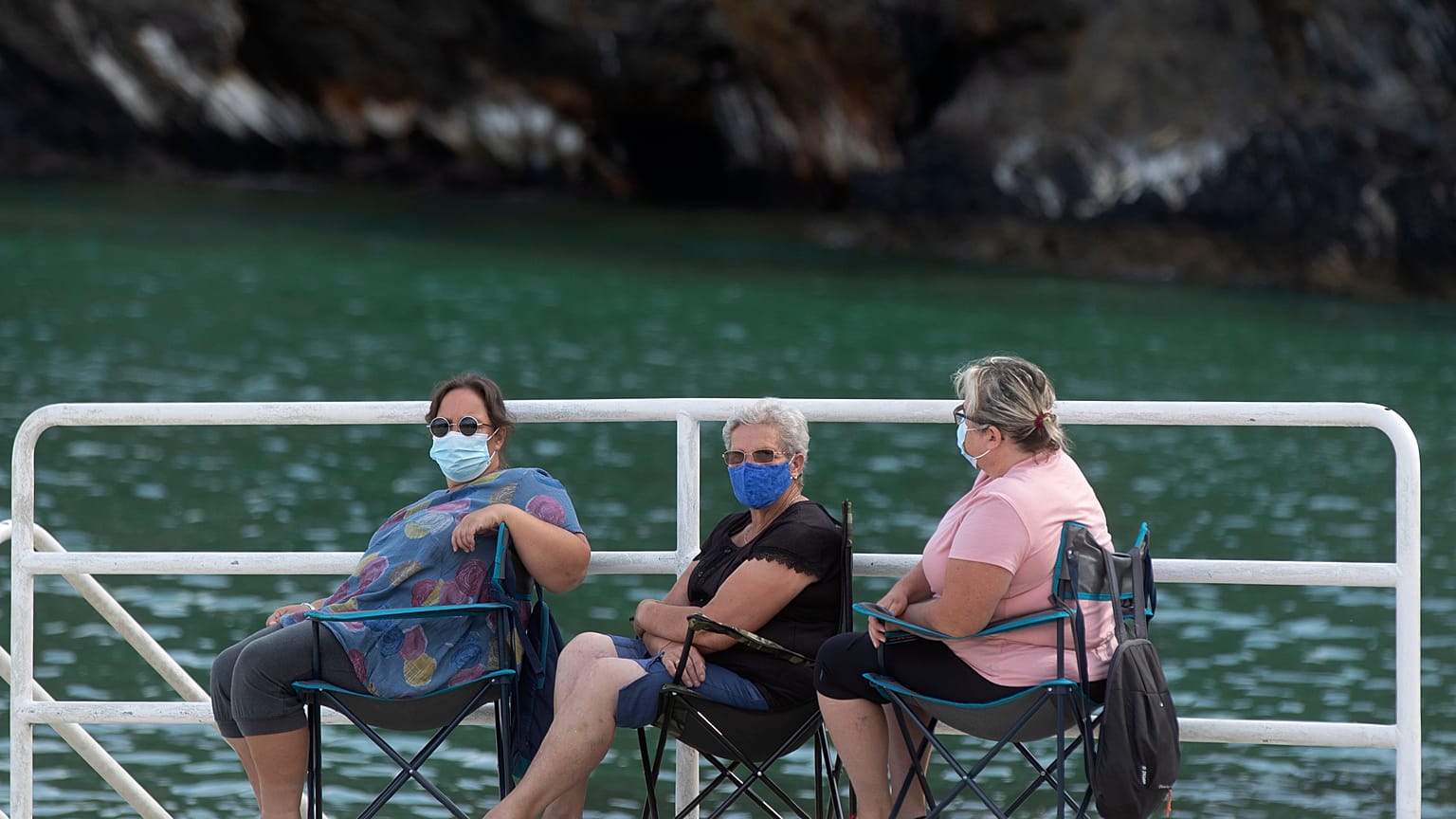Several European countries have seen an uptick in coronavirus cases after bringing down transmission. Is this the beginning of a second wave?
As coronavirus cases rise in several European countries, governments are scrambling to contain new emerging clusters of the virus, and some citizens are wondering if countries are prepared to prevent a potential "second wave".
Many experts agree that Europe is experiencing a resurgence in cases, as people are more relaxed about social distancing during the summer months.
France has seen a 78 per cent increase in its weekly COVID-19 incidence rate per 100,000 people. New cases have increased from a couple of hundred per day to more than 1,000.
Some of this is due to expanded testing and locating of asymptomatic cases, particularly in young adults. Health officials have warned that more young people are testing positive for the virus as they ignore social distancing.
Spain is once again a European hotspot with higher infection rates in its northeastern regions near Barcelona, which prompted officials to issue more restrictions.
But is this the beginning of the "second wave" of the virus with widespread transmission like Europe's first waves that forced countries to go into lockdown?
Releasing restrictions means a resurgence of cases
"The assumptions that the disease would naturally come in waves is an assumption that's based on previous pandemics with other respiratory viruses like influenza," said Dr Mike Ryan, the director of the World Health Organization's health emergencies programme.
"What is clear is that countries that have implemented control measures have suppressed the virus and when those measures to suppress the virus are lifted the virus returns," he said.
Lifting restrictions on the virus inevitably causes the virus to come back but social distancing measures and testing and tracing methods can help contain a large resurgence of the virus that would resemble Europe's first waves in March and April.
"I think that we should consider ourselves always at risk until we either [have] immunity, which no community has, or we have a vaccine. And first or second wave isn’t super accurate in describing that," said Sarah Fortune, a professor at Harvard's School of Public Health, at a press conference.
That's because as long as the virus is present in the community, people should not be letting up on social distancing so that the case numbers stay low, experts say.
"At the moment the numbers are still very small, but we see an increase in many European countries, so it could be the beginning of a second wave," said Professor Jürgen Haas, Head of Infection Medicine at the University of Edinburgh.
"In some countries, such as the UK, the social distancing restrictions have only just recently been lifted, so it can be anticipated that the numbers will begin to increase."
Some experts have said that the definition of a second wave is related to the way in which daily coronavirus cases and deaths are displayed and will be determined by whether or not the resurgence can be brought under control.
Italy, for instance, was an early European hotspot and had a large curve of new daily cases in March but has since been able to keep transmission to a few hundred cases a day. That is shown as a first wave in the graph below.
The United Kingdom, meanwhile, having issued movement restrictions later, had thousands of new cases for a longer period of time, with the daily case numbers coming down much later. These curves are also represented by the daily number of deaths due to the virus, which have stayed low in countries that issued lockdowns.
"Part of our definitional thinking is probably based on having seen the epidemic curves of deaths from US cities during Spanish influenza a hundred years ago," said Gabriel Scally, a member of the UK's Independent SAGE committee that advises the government.
"I think the UK is having a resurgence. The UK's epidemic curve so far has been very long and drawn out because of the late and inadequate response in the early months," Scally added.
"If we are able to control [the resurgence] and reduce infection numbers similar to the first wave it would be considered a second wave, rather than a resurgence," said Haas.
The ability to do this could depend on how the public responds to this uptick in cases.
Bringing down case numbers during summer
German officials have said that getting cases to come down during the summer is important as Europeans are more likely to be outside.
"We must work to get the infection figures down again, and they should be at the lowest possible level at the end of the summer, because, according to everything we know so far, it is easier for us to keep the numbers down in summer than in fall and winter," said Helge Braun, Angela Merkel's chief of staff, according to the Associated Press.
Many are more worried that larger community transmission could occur more easily during the fall season.
"It is very likely since we know that COVID-19 is transmitted via droplets and aerosols, and during the winter season when people tend to stay mainly in closed rooms this will automatically lead to increased numbers," said Haas, noting that so far, however, it does not appear to be a seasonal infection such as flu.
But many older people — more at risk of dying of the virus — are continuing to practice distancing.
"I don't believe we will see a generalised second wave because I believe old and vulnerable people will still protect themselves, even if governments are busy stripping away some of the protection afforded by rigorous and enforced social distancing measures," said Scally.
"The question to ask is, how much pressure do you have on the virus, do you understand where the virus is in your country, do you understand populations that are being affected, have you got in place the necessary control measures to keep the pressure on the virus," the WHO's Dr Ryan said last week.
"Every single country where pressure has been lifted on the virus, where the virus is still at the community level, there's been a jump back in cases.
"The question is how effective are authorities at reacting to those increased numbers and to what extent are communities empowered, supported and involved in that process and playing their part in suppressing the virus transmission," he added.















